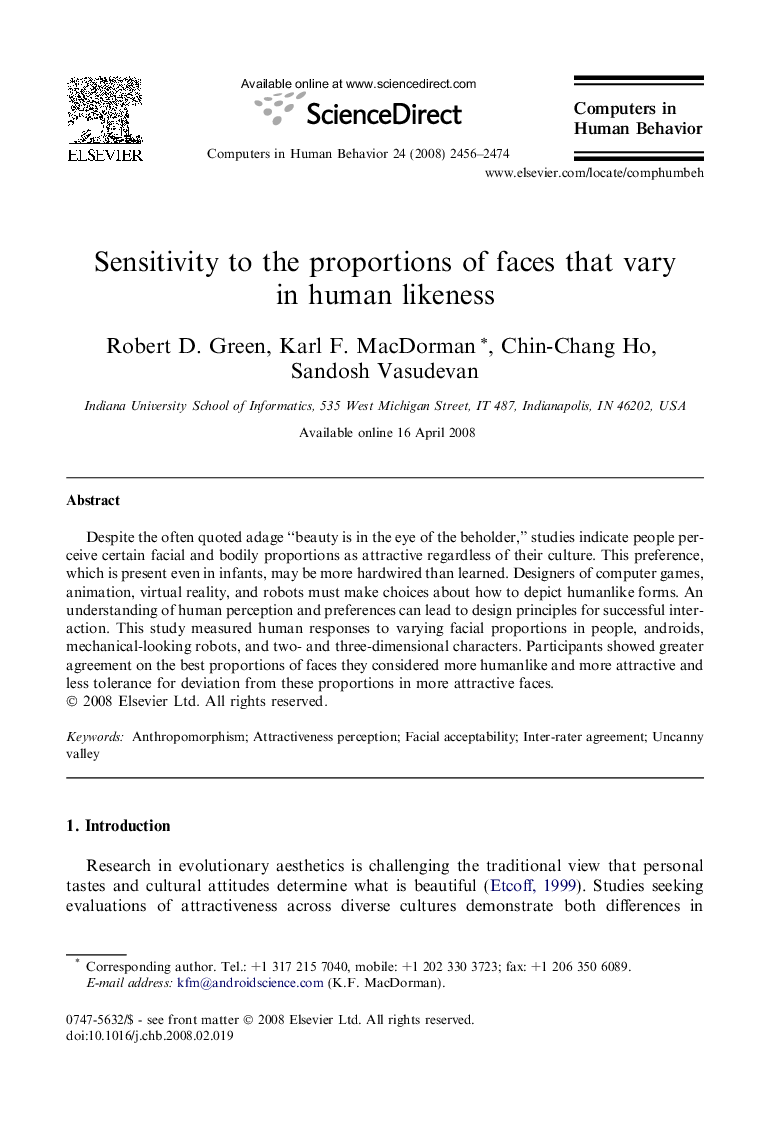| Article ID | Journal | Published Year | Pages | File Type |
|---|---|---|---|---|
| 351969 | Computers in Human Behavior | 2008 | 19 Pages |
Despite the often quoted adage “beauty is in the eye of the beholder,” studies indicate people perceive certain facial and bodily proportions as attractive regardless of their culture. This preference, which is present even in infants, may be more hardwired than learned. Designers of computer games, animation, virtual reality, and robots must make choices about how to depict humanlike forms. An understanding of human perception and preferences can lead to design principles for successful interaction. This study measured human responses to varying facial proportions in people, androids, mechanical-looking robots, and two- and three-dimensional characters. Participants showed greater agreement on the best proportions of faces they considered more humanlike and more attractive and less tolerance for deviation from these proportions in more attractive faces.
